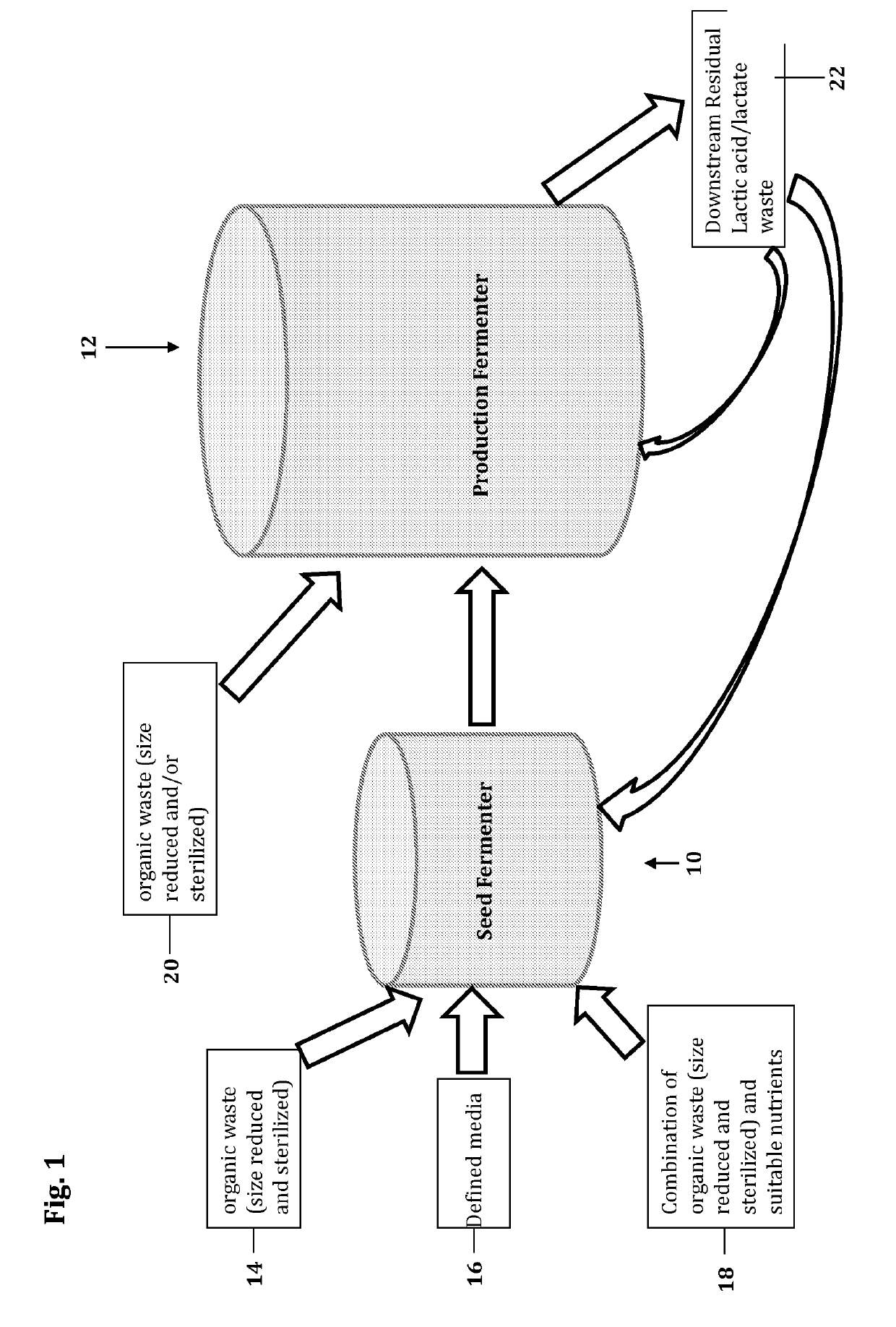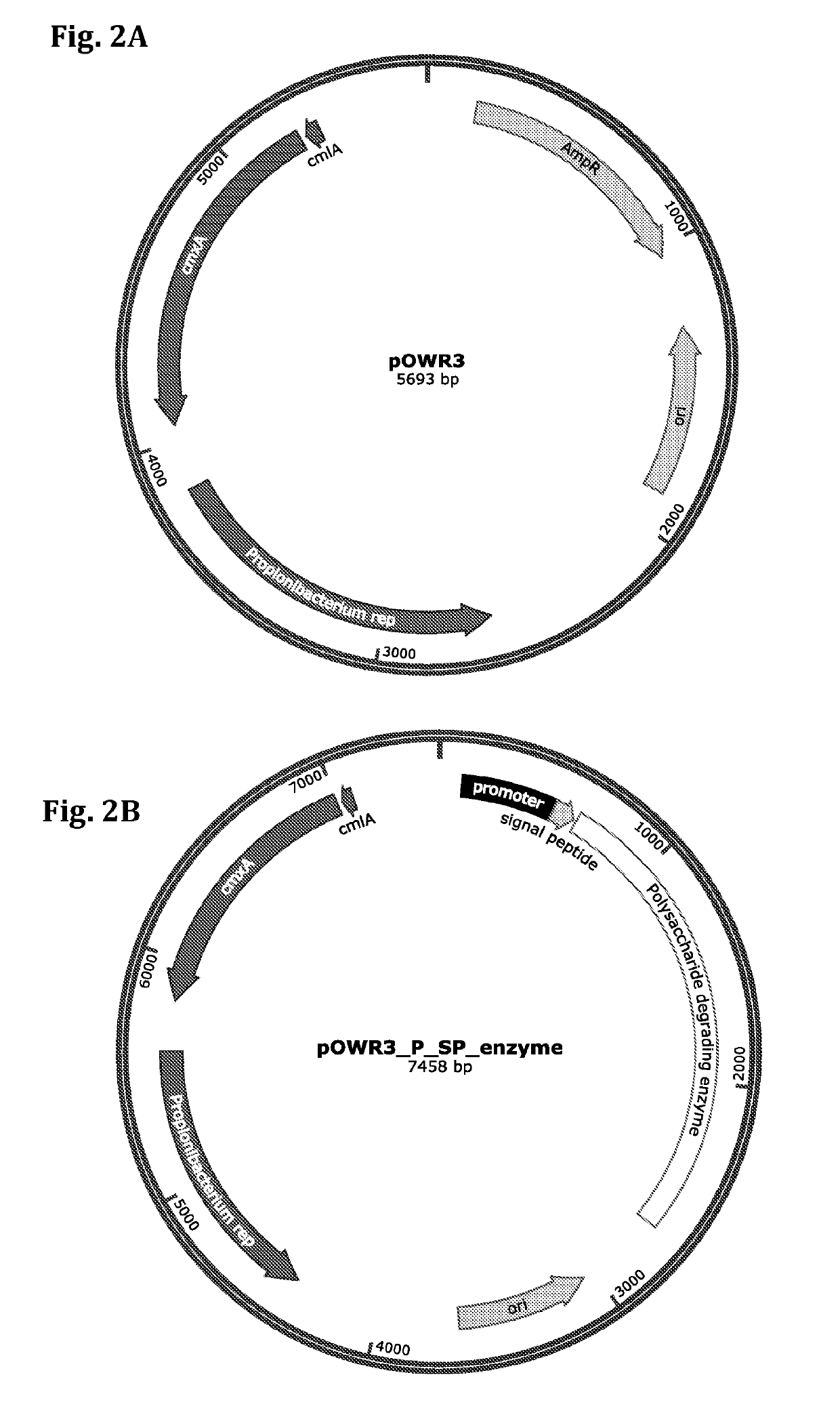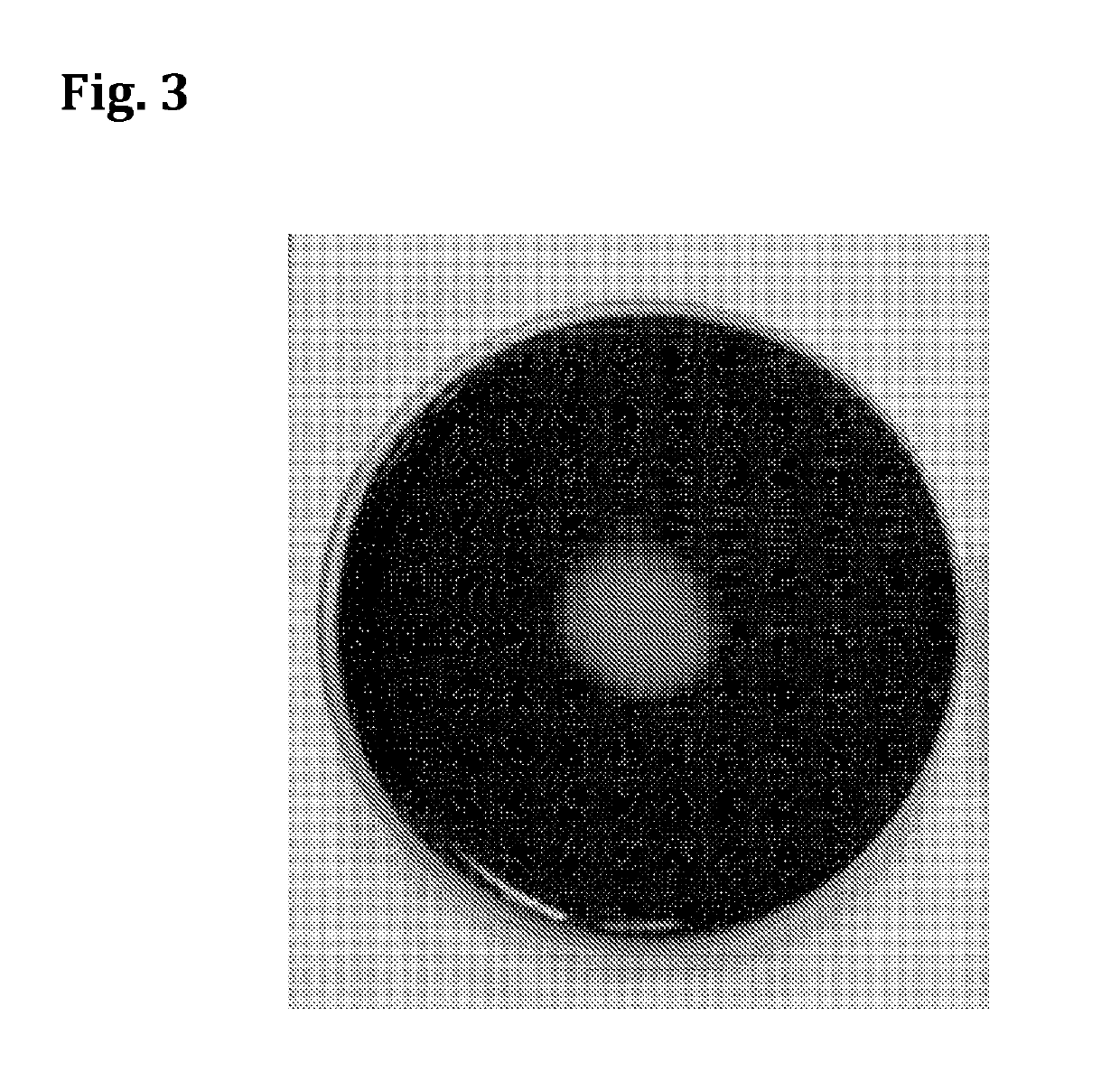Lactic acid-utilizing bacteria genetically modified to secrete polysaccharide-degrading enzymes
- Summary
- Abstract
- Description
- Claims
- Application Information
AI Technical Summary
Benefits of technology
Problems solved by technology
Method used
Image
Examples
example 1
ions of Suitable Vectors for Genetically Modifying Bacteria
[0207]Construction of E. coli-P. freudenreichii Shuttle Vector:
The Vectors Constructed can be Used in Both E. coli and P. freudenreichii.
[0208]The pOWR3 vector (a schematic illustration is shown in FIG. 2A) was prepared as follows: Propionibacterium replication protein sequence (SEQ ID NO. 84) and chloramphenicol resistance genes (cmx(A) (SEQ ID NO: 85) and cml(A) (SEQ ID NO: 86) from Corynebacterium striatum pT10 plasmid) were synthesized in tandem into a vector comprising E. coli origin of replication (ori) and ampicillin resistance cassette (AmpR). This results in a ˜5.6 kbp plasmid able to replicate both in E. coli and P. freudenreichii. This vector further includes a PB origin of replication sequence. The resulting pOWR3 vector is smaller than other known P. freudenreichii expression vectors (5.6 kbp versus 6.2-8 kbp), which makes it easier to transform to bacterial cells (for example, by electroporation) and easier to...
example 2
ion of Suitable Expression Cassettes and Expression Vectors for Genetically Modifying Bacteria to Express and Secrete Polysaccharide Degrading Enzyme
[0212]Listed below are exemplary polysaccharide degrading enzymes (Glucoamylases, cellulases and hemicellulases (Xylanases), signal peptides and promoters used for creating expression cassettes used in expression vectors.
[0213]The following exemplary enzymes listed below in Table 1, are used in expression cassettes and expression vectors for genetically modifying bacteria. The enzymes sequences are obtained from different sources (organisms). The original signal peptide of each of the listed enzymes is removed and is replaced by the foreign (different) signal peptide.
TABLE 1Exemplary polysaccharide degrading enzymesOptimalSEQ IDSEQ IDGI / accessionOptimalTemp.NO (nt)NO. (AA)Organism nameoriginnumberpH(° C.)114Saccharomycopsis fibuligeraeukaryote1137955-6 45215Aspergillus nigereukaryote300258514-5 55316Clostridium SP.5 G000Gram+231542 5.5...
example 3
on of Expression Cassettes for Expressing Various Polysaccharide Degrading Enzymes in PB, Utilizing Different Combinations of Signal Peptides and Promoters
[0316]The nucleotide sequences inserts of the various promoters and polysaccharide degrading enzymes were obtained using PCR reactions utilizing suitable primers (listed in Table 2) and a corresponding template. A Q5 High-Fidelity DNA Polymerase (New England Biolabs, M0491) was used for the PCR reaction, according to manufacture instructions. PCR conditions were as follows: initial denaturation—98° C. for 1 minute, secondary denaturation—98° C. for 30 seconds, annealing −60° C. for 30 seconds, elongation—72° C. for 50 seconds. PCR programs run for 30 cycles (secondary initiation step to elongation step). PCR products were tested on agarose gel and purified using Wizard PCR cleanup kit (Promega).
Example 3.1—Expression of Glucoamylase Gi|13795 from Saccharomycopsis Fibuligera with a PFREUD_18290 Promoter and a PFREUD_18290 Signal Pe...
PUM
| Property | Measurement | Unit |
|---|---|---|
| Solubility (mass) | aaaaa | aaaaa |
Abstract
Description
Claims
Application Information
 Login to View More
Login to View More - R&D
- Intellectual Property
- Life Sciences
- Materials
- Tech Scout
- Unparalleled Data Quality
- Higher Quality Content
- 60% Fewer Hallucinations
Browse by: Latest US Patents, China's latest patents, Technical Efficacy Thesaurus, Application Domain, Technology Topic, Popular Technical Reports.
© 2025 PatSnap. All rights reserved.Legal|Privacy policy|Modern Slavery Act Transparency Statement|Sitemap|About US| Contact US: help@patsnap.com



